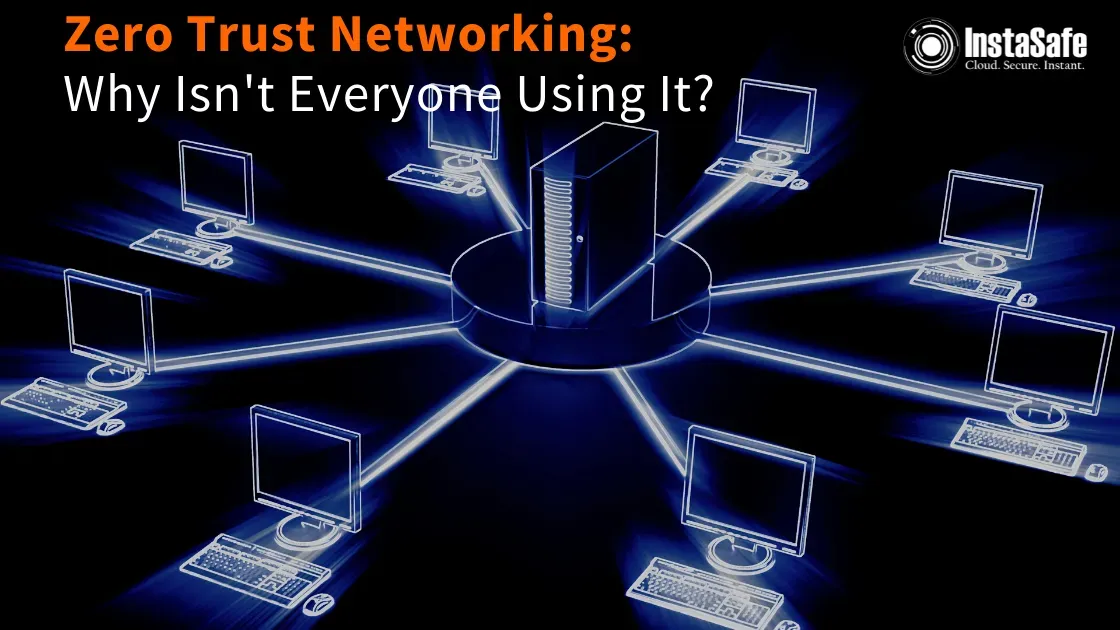Zero Trust Networking: Why Isn’t Everyone Using It?

Wondering why everyone isn’t using zero trust networking? Read on to know more.
With the continuation of the remote working environment, ensuring remote workforce security is increasingly becoming the top priority for businesses and organisations.
While outdated security solutions like Virtual Private Networks (VPNs) worked well before—the increasing cybersecurity threats and online attacks create the need to extend the security systems to protect the network and sensitive data.
This is where Zero Trust Network Security comes into play. It’s a perfect and ideal solution to ensure secure remote access. However, many misconceptions have revolved around Zero Trust Network Access (ZTNA)—making it seem more like a buzzword than a realistic solution for organisations.
This article will take a wider look into ZTNA, its importance, and why not every organisation’s using it yet.
What is Zero Trust Networking?
Zero Trust Network Access is a security model based on the principle of “Never Trust, Always Verify”—creating a robust security perimeter across each network’s resources instead of each network.
Thus, it employs a default deny access for all approach—removing excessive trust from the network and providing authenticated and authorised access to only those resources that users need and from only those devices that meet access control needs and requirements.
Thus, it eliminates the risks of unprotected personal employee devices—making it mandatory for employees to access and connect to the network resources and applications from office devices.
Here are some of the benefits and features of Zero Trust Network Access for your organisation:
- Creates secure, private, and encrypted tunnels from the employee’s or user’s devices to the network resources they wish to access.
- Removes exposed IP addresses and external devices to make your network invisible to the internet.
- Enables continuous risk and trust assessment for each user access request.
- Ensures secure and end-to-end data encryption.
You can implement the Zero Trust Network architecture for multiple use cases like securing SAP applications, IP addresses, accessing thick client applications, Linux machines, and more.
Thus, ZTNA ensures resource security by closing security gaps, preventing the spreading of data breaches beyond a single network resource, and making cybersecurity attacks less effective.
Now, let’s see, despite all these benefits, why not all organisations are using the Zero Trust Network Access solution.
Why Don’t Organisations Extensively Adopt ZTNA?
Here are the primary reasons why organisations don’t adopt Zero Trust Network Access widely and popularly.
- Google is considered a model example as the first company to implement Zero Trust Network Access policies. However, at the same time, it took almost a decade to completely implement and refine its Zero Trust approach, despite all the resources and tools at its disposal.
Hence, small and medium-sized organisations with limited resources and tight budgets refrained from such large-scale and long-term IT transformation projects and questioned adopting the ZTNA model for their security and remote access needs.
- Another reason or rather misconception that makes organisations not adopt ZTNA is that Zero Trust is simply a set of principles instead of the specific implementation of industry standards.
Several enterprise vendors offer ZTNA options that are often expensive, difficult to deploy, and lack the compatibility and flexibility to integrate with any company’s infrastructure. This increases the cost and complexity of replacing the entire security framework with the secure Zero Trust Network design.
Hence, because of these reasons and misconceptions, organisations settle with the traditional security solutions like VPNs—assuming that they’re less risky and requires less effort to deploy.
The Truth About ZTNA
Contrary to the abovementioned myths and misconceptions, ZTNA is honestly easy to deploy, scale, manage, and configure if you choose it from the right vendor.
Here are some reasons to deploy the ZTNA model and network architecture for your organisation:
- Zero Trust Network Access is a cloud-ready solution that secures hybrid applications and workforces.
- It increases business agility—making your IT infrastructure more secure and responsive to business requirements.
- ZTNA improves your organisation’s security posture—allowing visibility to authorised users and making assets invisible to the external public internet.
- Enforces secure work from anywhere environment.
- Provides better visibility of the network traffic and threat identification in real-time.
- Removes latency and issues of backhauled traffic—ensuring a quality user experience and performance with single-click access.
Conclusion
Given the benefits of Zero Trust Network Access, it’s a perfect replacement for the traditional VPN solution that significantly reduces data breaches and cybersecurity risks by removing exposed IP addresses and the excessive implicit trust of all the users.
We hope this blog helped you understand why all organizations are not using zero trust networking and also how to implement zero trust network architecture for your company.
So, if you’re confused about choosing a ZTNA solution for your organisation—check out our InstaSafe Zero Trust Security solution to easily deploy, scale, and configure ZTNA. In addition, we ensure seamless onboarding, simplified access control, advanced security, and better visibility. Thus, check out our solutions or book a demo for your organisation today!
Key Products
Zero Trust Application Access | Zero Trust Network Access | Multi Factor Authentication | IAM Identity And Access Management | Secure Enterprise Browser
Key Features
SSO Single Sign On | Endpoint Security | Contextual Based Access Controls | Always On VPN Connection |Clientless VPN | Device Binding | Device Posture Check | Domain Joining
Key Solutions
VPN Alternative Technology | Secure Remote Access Solutions | Cloud Application Security | DevOps Security | VoIP Security Solutions
